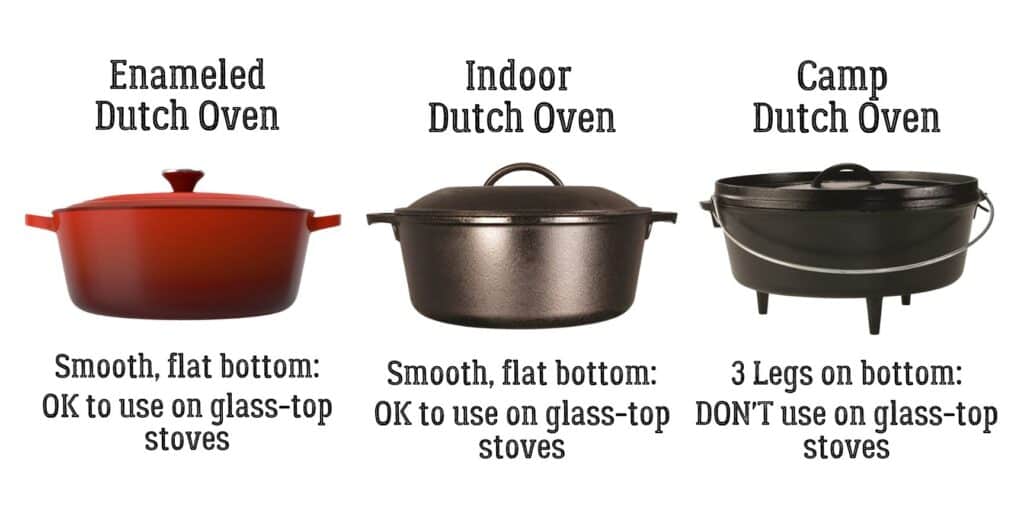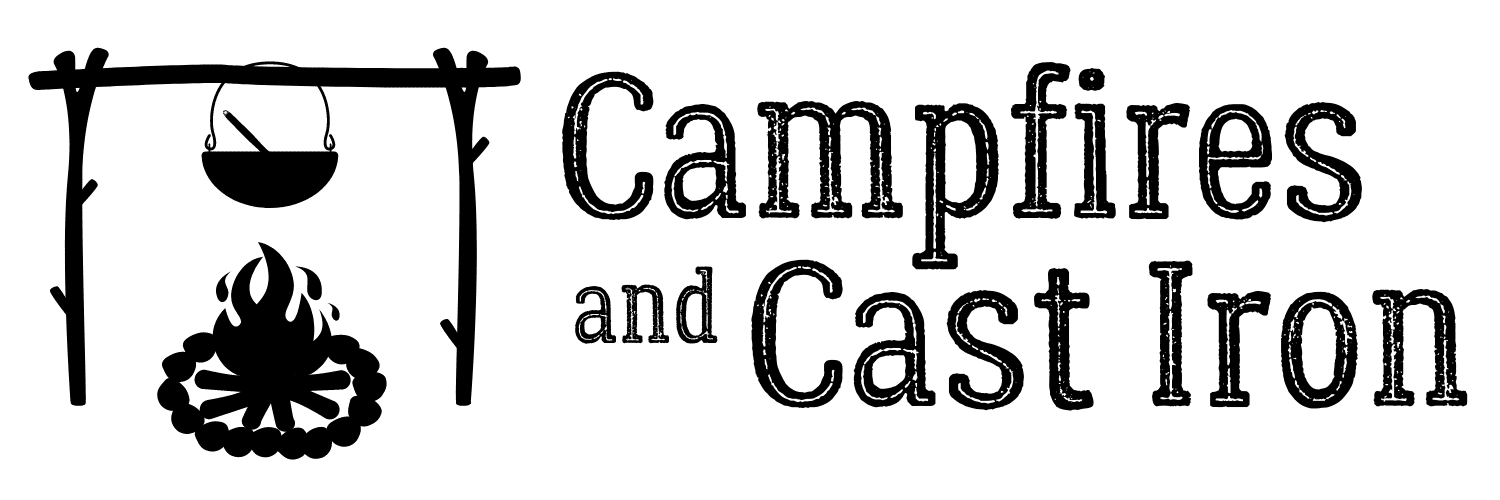With more people opting for sleek, stylish ceramic glass cooktops, I often hear the question, “Can you use cast iron on a glass-top stove?” Many people are unsure whether it’s safe to put heavy cast iron skillets and dutch ovens on a glass cooktop. This is understandably so. You certainly don’t want to scratch or crack a nice, new appliance. So, is it safe to use cast iron on a glass-top stove, or should you stick to lighter, smoother cookware?
Cast iron cookware is safe to use on glass-top stoves and ceramic cooktops. To prevent accidental scratches, ensure the bottom of the pan is clean and smooth. Place cast iron on the cooktop gently and pick it up instead of dragging or sliding the pan across the glass-top surface.
Glass-top stoves are surprisingly durable and can easily withstand the weight of cast iron cookware. However, there are some precautions you should take to protect both your cooktop and your cast iron from accidental damage. In this article, we’ll discuss which cast iron pans are best for use on a glass-top stove, which types of cast iron to avoid, and how to safely use cast iron cookware on glass cooktops.
Which Types Of Cast Iron Pans Can You Use On A Glass-Top Stove?
You can use both regular and enamel-coated cast iron skillets, saucepans, dutch ovens, and griddles on a glass-top stove. Smooth-bottom cast iron pans or pans with inset heat rings work best and are safer for glass cooktops. They make better contact with the burner surface and reduce the chances of scratching the glass.

Which Types Of Cast Iron Cookware Should Not Be Used On A Glass-Top Stove?
Do not use cast iron pans or dutch ovens with legs, rough bottoms, sharply-raised heat rings, or pans that don’t sit flat on your glass-top stove. These features can scratch or crack glass cooktops. Additionally, pots with legs or warped pans that wobble won’t make good contact with the burner, causing uneven heating.
The videos below show an example of a warped pan that wobbles and spins. This pan would work fine on a gas stove and could probably be used on an electric coil stove without issue. However, it wouldn’t sit flat on a glass cooktop and would be more likely to slide around and scratch the glass surface.
Can You Use A Cast Iron Dutch Oven On A Glass-Top Stove?
Yes, it is fine to use both regular cast iron dutch ovens and enameled dutch ovens on a glass-top stove. Just make sure the bottom of the dutch oven is smooth and doesn’t have legs or a raised heat ring that might scratch or damage the glass surface.

Will Cast Iron Cookware Scratch A Glass Cooktop?
All types of cookware have the potential to scratch a glass cooktop if not used properly. But, you do need to be more careful with cast iron. Because it’s heavier and more prone to having rough spots or raised markings, cast iron may be a little more likely to scratch a glass-top stove.
Fortunately, scratches can be prevented by using smooth-bottom pans, avoiding cast iron pans that wobble or spin, and gently lifting pans to move them instead of sliding or dragging them on the stovetop.
How To Safely Use Cast Iron Cookware On A Ceramic Or Glass-Top Stove
By following these guidelines, you can safely and confidently use cast iron cookware on your glass-top stove:
Glass-Top Do’s:
- Start with a clean pan and cooktop. Wash the bottom of the pan with mild dish soap and water and wipe down the stovetop prior to cooking if you notice any food or oil residue. This will prevent a burned-on mess on both your pan and stove.
- Use a similarly-sized burner. To avoid overheating one small area of the cast iron pan and possibly causing it to crack, don’t use a large pan on a small burner. Ideally, the diameter of the pan should be no more than one inch larger than the burner.
- Slowly preheat cast iron cookware. Cast iron heats up slowly but retains heat well. Gradually heat your pan over low-medium heat, then add oil and cook.
- Gently lift and place cast iron cookware. Avoid sliding and dragging cast iron on the glass-top stove. Use a cooking utensil to move food around in the pan rather than shaking it.
- Remove cast iron from the stovetop to cool. Because cast iron retains heat so well, it stays hot longer and takes more time to cool down. For this reason, it’s best to remove cast iron pans from the stovetop soon after cooking and place them on trivets, cooling racks, or hot pads. This prevents accidentally burning or scorching the glass cooktop.
Glass-Top Don’ts:
- Don’t slide, drag, or drop pans. Set cast iron down gently on the glass. Pick the pan up instead of sliding it across the cooktop.
- Avoid cooking with high heat. Cook using medium heat to avoid smoky cast iron and a scorched cooktop. Excellent heat retention means your pan will continue to get hotter, so you may need to lower the heat as you cook.
- Don’t put cold cast iron on a hot burner. Cast iron needs to be heated slowly to avoid thermal shock, which can crack your pan and damage your stovetop. Put a cold pan on a cold burner and let the two heat up together.
Best Cast Iron Brands To Use On A Glass-Top Stove
You can use just about any brand of smooth-bottom cast iron cookware on a glass cooktop. However, there are a few brands and styles that stand out above the rest and work particularly well on glass-top and induction stoves. Here are my top picks:
Skillets
- Lodge Pre-Seasoned Cast Iron Skillet
- Field Company Pre-Seasoned Cast Iron Skillet
- Greater Goods Pre-Seasoned Cast Iron Skillet
- Victoria Pre-Seasoned Cast Iron Skillet
- Backcountry Iron Pre-Seasoned Smooth Skillet
- Finex Pre-Seasoned Smooth Skillet
- Le Creuset Enameled Skillet
- Tramontina Enameled Skillet With Lid
Dutch Ovens
- Lodge Pre-Seasoned Cast Iron Dutch Oven
- Victoria Pre-Seasoned Cast Iron Dutch Oven
- Field Company Pre-Seasoned Cast Iron Dutch Oven
- Greater Goods Pre-Seasoned Cast Iron Dutch Oven
- Lodge Enameled Cast Iron Dutch Oven
- Crock Pot Enameled Cast Iron Dutch Oven
- Staub Enameled Cast Iron Dutch Oven
- Le Creuset Enameled Cast Iron Dutch Oven
Summary
In summary, it’s perfectly fine to use smooth, flat cast iron skillets, dutch ovens, griddles, and more on glass-top stoves. Just follow the simple guidelines outlined in this article and you’ll enjoy cast iron cooking on your glass cooktop for years to come.
Do you have cast iron questions? Be sure to check out the Cast Iron section of the blog for more helpful use and care articles!
This post may contain affiliate links. This means if you click on a link and make a purchase, I will receive a small commission, at no cost to you, that makes it possible for me to keep the Campfires and Cast Iron site up and running. Please see our disclosure policy for details.



